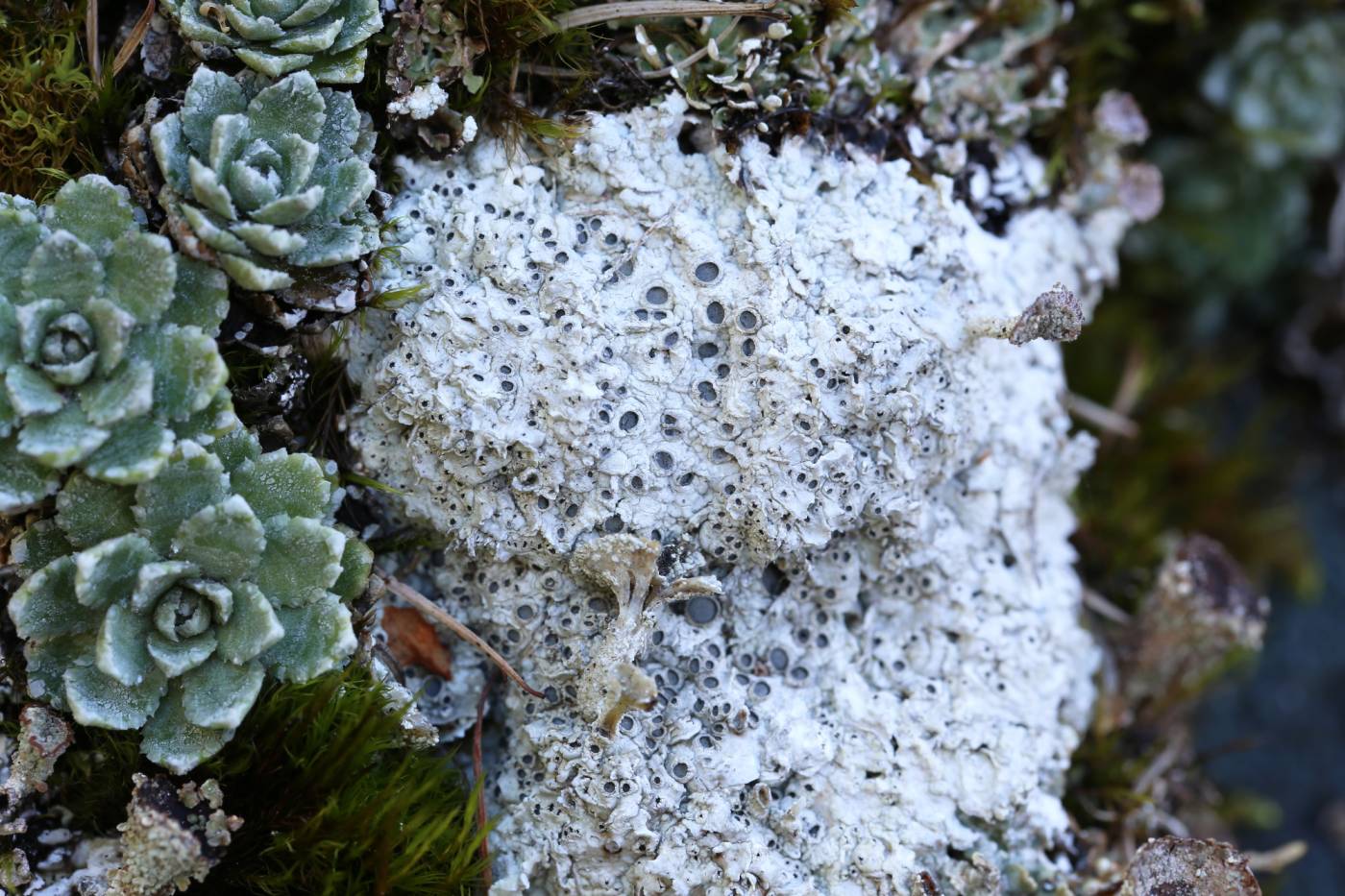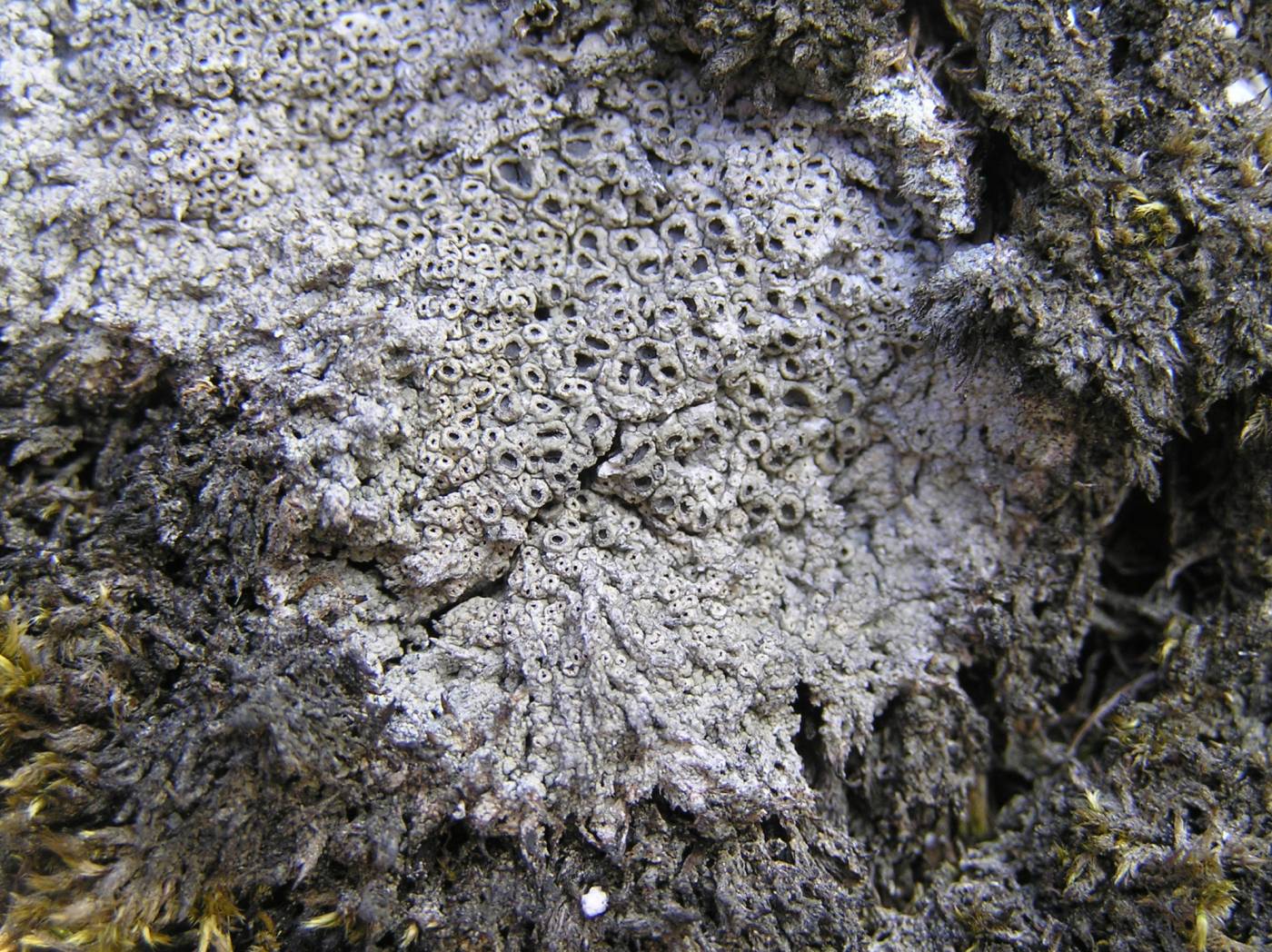The species characterized by the relatively thick grey thallus, 4-spored asci and the production of lecanoric and diploschistesic acids (C+ red). Its life cycle is interesting, as it begins parasitically on squamules of lichens from the genus Cladonia and less frequently also from the genus Stereocaulon. The basal squamules are at first only grey and swollen, but already react typically with lime chloride (C+ red). Later, the thallus with fruiting bodies is formed. The lichen then becomes independent and covers bryophytes or plant debris on the soil, occasionally also on rocks or tree bases. Its most common habitats are calcareous grasslands and rocky steppes on base-rich substrates, but its occurrence on acidic substrates is not exceptional. Diploschistes muscorum has a cosmopolitan distribution. In Europe, it is abundant especially in the southern part of the continent. In the Czech Republic, it is one of the sparsely distributed lichens, relatively abundant in karst areas and river valleys.
Literatura: Lumbsch H. T. (1989): Die Holarktischen Vertreter der Flechtengattung Diploschistes (Thelotremataceae). – The Journal of the Hattori Botanical Laboratory 66: 133–196.
taxonomic classification:Ascomycota → Lecanoromycetes → Ostropales → Graphidaceae → Diploschistes
Red List (Liška & Palice 2010):LC – least concern
Occurrence in the Czech Republic
All records: 197, confirmed 155. One click on a selected square displays particular record(s), including their source(s).

